But, Why?
You might think it's easy to find just the right sack for the job. Even if we limit our consideration to "simple" bags (i.e. no carrying straps, zippers, multiple compartments, wheels, etc...), there really is a lot to it. If you want to optimize weight, water-resistance, versatility, and bulk (compacted size), then it gets complicated quickly.
Let's see where this new invention fits into the scheme of things. I'll start with simpler, older designs first. Initially, these were all designed for very specific uses (i.e. extreme mountain climbing and extreme boating adventures). Now, even in an urban environment, these different, high-tech sacks are finding new uses. We start with a new take on an ancient design, dating back thousands of years, the stuff sack.
Stuff Sacks
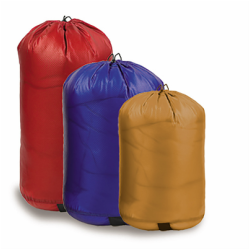
Incidentally, this is also why all fine down sleeping bags have two sacks. One smaller sack is for tight, but not loft-damaging, compression, used while hiking. A second, larger, cotton sack is for long-term storage, so that the loft and insulation stay high.
Dry Bags
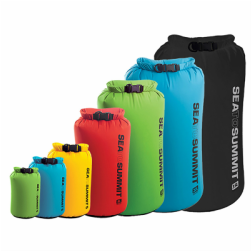
If the bag is heavy vinyl or rubber, then you can use it as a floatation device. Once the top is rolled, you can't purge any air at all. You can transport water long distances though. You can also make a big shower out of these. Fill the (black) dry bag with water, leave it in the sun for a couple hours, hang it from a tree branch, add a hose, and you've got a hot water shower out in the wild. Deluxe! Even the treated nylon dry bags can be used to transport water over limited distances, less than 100-300 meters.
Sometimes, this easy-expand, difficult-deflate is not a problem, say, in a large kayak. Often those dry bags are very thick vinyl, since airtight and watertight are more important than weight. For a backpack, with limited volume, 100% airtight can be a problem. There are other times when airtight can be a problem. I often find myself transporting wet clothes from badminton or swimming training, along with other dry items in my small knapsack. I have to be careful to roll up the dry bag and squeeze most of the air out, so that I can stuff it into the knapsack. If I get it wrong, then I have to unroll it and start all over again.
Compression Sacks
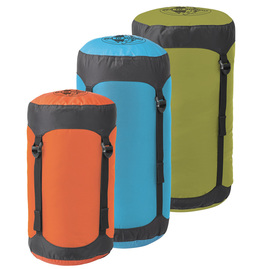
The inside of a compression bag looks like a stuff sack. Then there is a detached top panel with 4 buckles for the straps. The 4 straps are sewn into a reinforced bottom panel. You pack the "stuff sack" and cinch it closed. Then you position the top panel and snug the straps to your desired compression level.
Why not compression sacks everywhere instead of stuff sacks? Well, it is difficult to get all the straps lined up and this adds weight too. Then, you have to work your way around all the straps, tightening them a bit at a time. If you forget to pack something, then it is time consuming to repack it all again. If you always pack the same item, such as a sleeping bag, then this is a waste. Worse, you can accidentally overcompress, damaging the item over time. Finally, the compression system limits water resistance.
"Easy Purge" Dry Sack
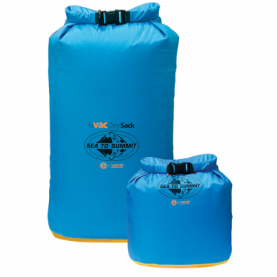
Examples of breathable, waterproof fabric include GoreTex, eVent, and recently, OutDry. Think of these as layers of different fabrics, sandwiched and sealed together. For example, GoreTex is two layers of nylon or polyester fabric, with a thin plastic membrane layer in the middle. The thin plastic membrane has tiny, microscopic holes, which let air and water vapor (sweaty steam) out, while not letting liquid water drops through to the inside. So historically, this type of fabric was used to keep rain from getting in, while letting water-vapor out. For a rain jacket or snow pants, you stay dry and warm, even in a deluge. It's not perfect, but it is great.
The genius idea is to combine all the great features of a dry bag, but let you use it more like a compression sack. The eVent fabric panel on the bottom slowly leaches air out while you compress the roll top. The eVent fabric works both ways, so I can store wet swimming stuff in mine, and the water stays inside the bag. I'm not even sure the designers thought of this as a use case! I keep water in and let air out. Perfect!
Still, it's not perfect for all uses. Like nylon dry sacks, it purges slowly. If you want only a certain amount of compression (e.g. you don't want to crush your down or wrinkle your clothing while traveling), it's not that easy to jigger the roll top just right. Worse, air will leach in after you are done. This means a dry bag will slowly expand to consume more space after a few minutes. You don't want to race the slow poofing while packing your bag.
So how can we protect against water, yet precisely manage and maintain both bulk and compression? It turns out that this breathable waterproof panel was the breakthrough we needed! Enter the waterproof compression sack.
Waterproof Compression Sack
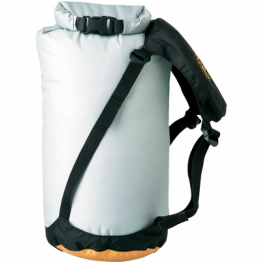
Now you can vary volumes and compression, and maintain bulk, compression, and dryness. This bag can do just about everything.
Here's one example use case that you should consider, if you ever drive long distances in inclement weather. If your car breaks down, you should call for help and wait. What if you have bad cell phone reception or it is difficult for responders to get to you? Then you should have extra clothing in case you have to walk for help or gas. Or maybe you forget to bring a critical layer? Want to bag that peak, take some photos, go for a side hike, help a friend? Simple enough, but that big bag of bulky clothing wastes space in your trunk, for the 99%+ of the time you don't need it. Check this out!
My car clothing bag below is about the size of a basketball. Yet it has the following, all size men's large:
- Full-zip, durable, breathable, waterproof ski/hiking pants
- High-loft thick fleece top
- Durable, breathable, waterproof jacket with hood
- Thick, fleece-lined track pants
- Thick socks
- Thick fleece gloves
- Thick wool hat with fleece lining
This is heavy-duty stuff. This ball is dense and quite heavy. It is my v1 and I intend to modify it soon. For instance, I'll add some outdoor work gloves, in case I have to work outside (repairing the car). The best winter work gloves I've ever seen are Black Diamond Guide Cold Weather Gloves, which have leather palms and fingers. I'll add some boots too. I need those two things often, so I might store them separately anyway.
For a car, low bulk is more important than low weight. For a low weight and low bulk weather kit, it takes more care and more money. The basic principle is the same. I'll save that for a later post. Ideally, every single piece is optimized as much as we optimized this compression sack.

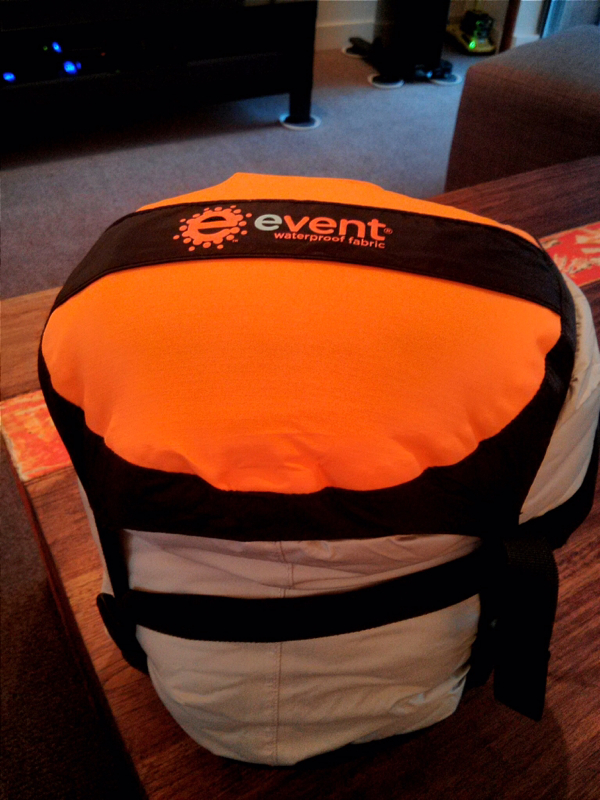
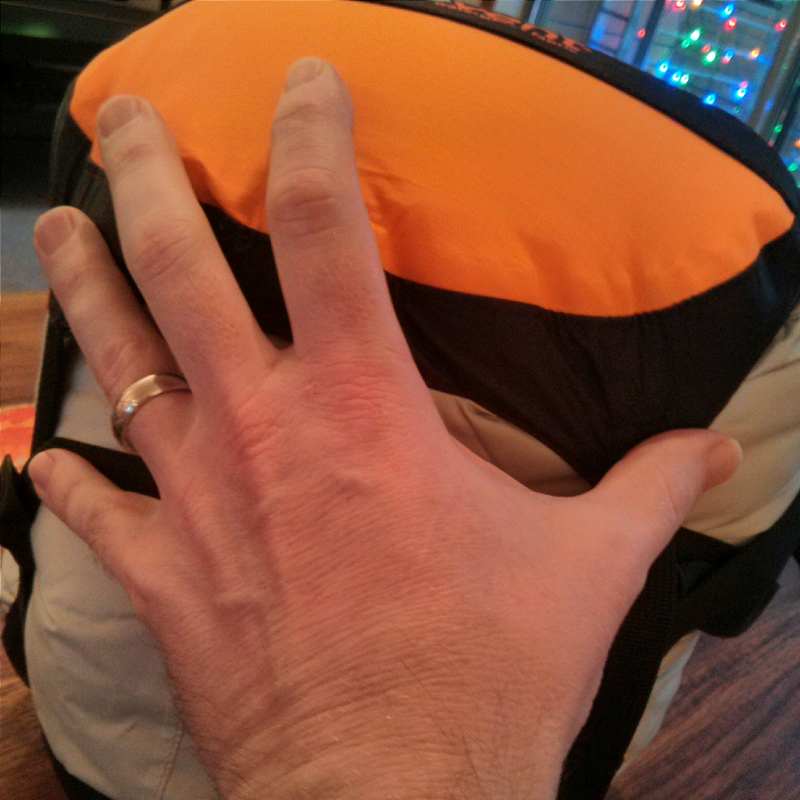
 RSS Feed
RSS Feed